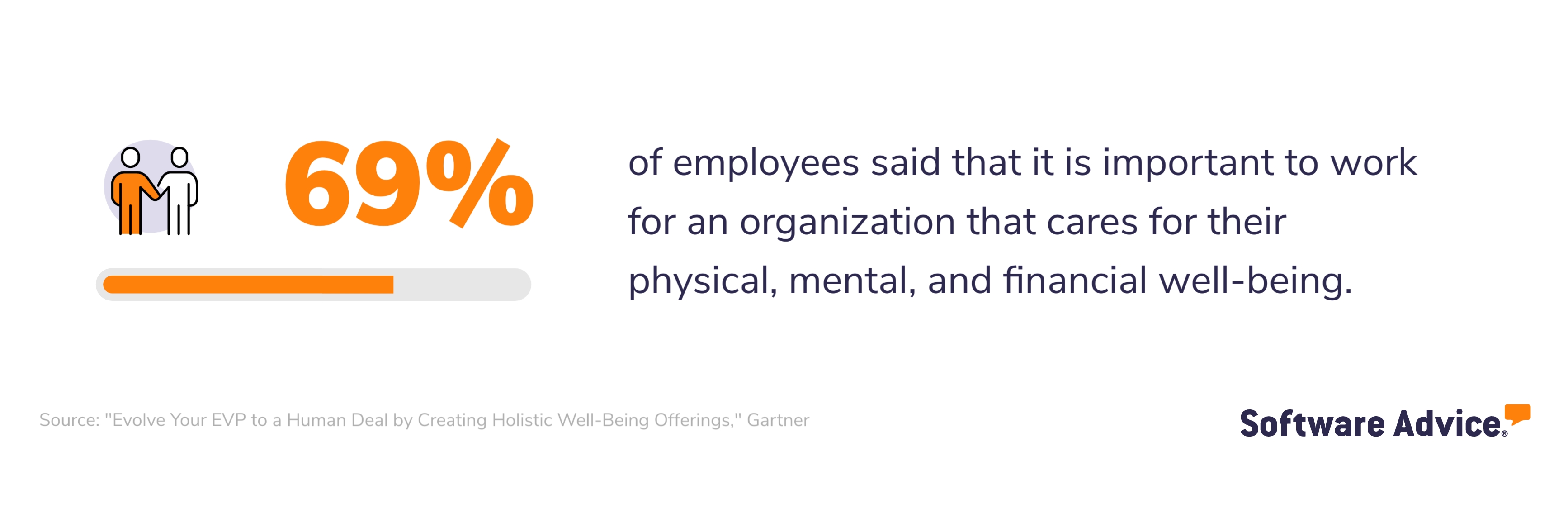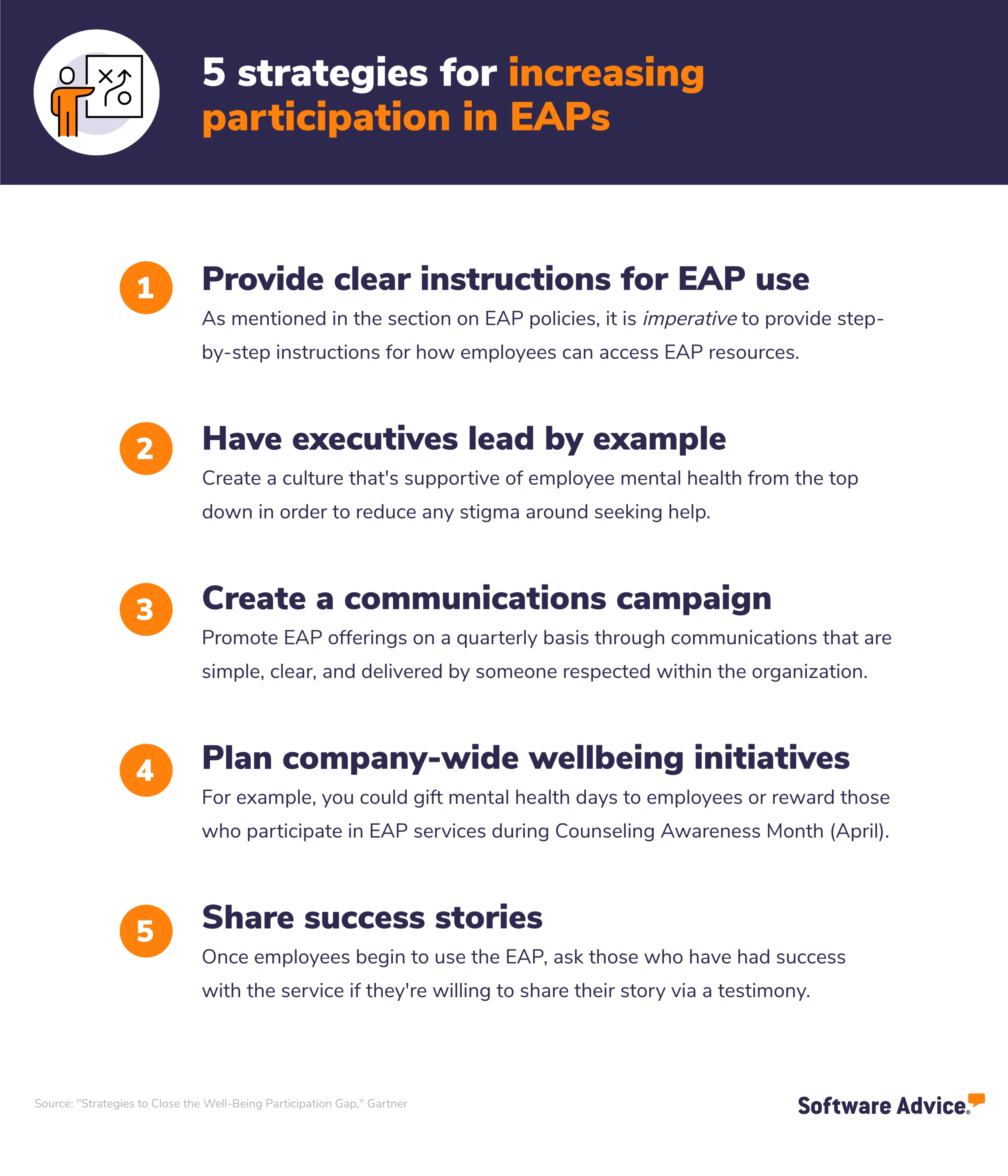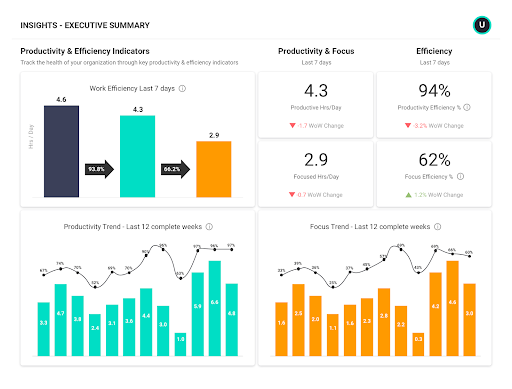How to Set Up a Small Business EAP
Employees want benefits that go beyond the basic offerings of health insurance and paid time off—it’s a fact.

That means that if you’re a small business HR professional who’s looking to improve the employee experience at your organization, it’s time to set up an employee assistance program (EAP).
Need to learn more about EAPs first?
Ahead, we’ll break down how to set up a small business EAP in five straightforward steps. From how to choose the best EAP model for your business to promotion tactics you can use to ensure your employees are aware of this benefit, we’ll cover everything you need to know to successfully implement an EAP at your organization.
Before we begin: a note on working with benefits consultants
Businesses of all sizes frequently partner with benefits consultants or brokers for expert guidance on matters related to healthcare, insurance plans, and EAPs. Benefits consultants are unbiased, knowledgeable professionals who can lead the charge when it comes to vetting providers and make suggestions based on what is best for their clients.
If your small business has worked with a benefits consultant or broker in the past, we suggest involving them in the process of finding and implementing an EAP in order to make sure you make the most informed decisions possible.
1. Choose an EAP model that works for your small business
While there are many different EAP delivery models, there are only a few that work well for small businesses (which typically have 500 employees or less): fixed-fee, contract-only, and consortia. Take a look at the table below to learn more about each of these models.
The three best EAP models for small businesses
Type of EAP model | How it works: | Benefits of: | Costs: |
|---|---|---|---|
Fixed-fee | Businesses contract an external EAP service provider in order to offer a suite of programs. | Fixed-fee models allow organizations to easily scale mental health offerings at predictable costs. | Payment is based on the number of employees within your organization, regardless of whether or not they use the services. |
Contract-only | Also called a fee-for-service model, businesses that use this model contract EAP service providers on a case-by-case basis. | Employers don’t have to pay for services that employees aren’t using. | Employers pay for services on a per-use basis. |
Consortia | Payment is based on the number of employees within your organization, regardless of whether or not they use the services. | Employers pay for services on a per-use basis. | Employers pay based on the number of employees within the consortium. The Ohio Public Entity Consortium estimates that the average cost is around $25 per employee [2]. |
In order to determine which one would work best for your organization, consider the following factors:
The size of your workforce: If you have around 100 employees or less, joining a consortium or opting for a fee-for-service model will be the most affordable options.
Potential participation rates: Do you expect high or low levels of participation? If you determine participation in EAP services will be high, a fixed-fee model will likely provide the best value for your business. Use a survey to collect anonymous feedback from employees about their interest levels in different EAP programs.
What similar businesses in your industry are doing: Is there a business similar to yours you can take a hint from when it comes to choosing an EAP model? We’ll touch on this more in step two, but understanding the demographics of a provider’s clients can help you determine whether your organization fits into that profile.
2. Find an EAP provider
Once you have an understanding of different EAP models for small businesses, it’s time to find a provider. To start, ask your healthcare provider if they offer an EAP. Or, if your business uses a PEO (professional employer organization), ask if they’re able to provide EAP services to your employees.
If neither of these options apply, don’t worry. The Society for Human Resources Management’s EAP Buyers’ Guide [3] is an excellent resource you can use to start learning about top providers, their offerings, and clients they serve.
Further, you can do your own research if this tool doesn’t have any providers that feel like they’d be a good fit for your business. Fortunately, there are hundreds of EAP providers out there, and some even specialize in certain industries, programs, and geographic areas.
In the box below, we’ve outlined considerations to keep top of mind when deciding whether a provider is a good fit for your business.
Selecting a provider 101
Client testimonials: Ask each provider you’re shortlisting to provide client testimonials. This will give you an idea of the size and kind of business they typically work with, as well as what services they offer that have been particularly successful for former clients.
Scope of service offerings: Even if you only want to offer counseling services to your employees, it’s a good idea to partner with an EAP provider that supplies a wide range of programs in case you want to expand offerings in the future. You should also ask the provider what kind of follow-up actions they take after meeting with employees to ensure success.
Client capacity: Considering the mental health worker shortage [4], it’s essential to ask whether the EAP’s counseling staff are accepting new clients.
Credentials of EAP staff: Are the EAP provider’s team members recognized members of an association such as the International Employee Assistance Professionals Association (EAPA)? This is especially important if you plan on offering services for sensitive topics such as substance abuse or trauma.
Location of services: Lastly, where will the provider offer their services? Will your employees have to travel to the provider’s office for help or can they meet virtually? Alternatively, is there an option to have the EAP team members visit your office? Ask each provider how and where they typically provide services and consider which setup would be the most convenient for your employees.
3. Establish an EAP policy
At this point, you should have decided on an EAP provider and drawn up a contract. Next, you’ll need to draft an EAP policy for your organization.
What is an EAP policy?
An EAP policy is a document that guides employees through the process of seeking support for personal or work-related problems through your company’s EAP. Your EAP policy should be easily accessible to all employees and include the following details:
The kinds of issues the EAP helps with
The range of services provided through the EAP
How employees can access the EAP
Points of contact (both internal and external)
How managers can support employees’ use of the EAP
Partner with the account manager from your EAP provider who oversees your organization’s account to nail down all of these details. Then, when you’re ready to draft your policy, use a template to make things as easy as possible.
A quick web search is all it takes to find an EAP policy template, and we’ve also provided a couple of examples from Workable and Grove at the bottom of this page for your convenience [5, 6].
Tech tip
Store your EAP policy alongside other frequently-accessed employee documents. If you have a company intranet or content management system, these platforms work well for this.
4. Promote the EAP offerings to your workforce
A recent survey* from Software Advice revealed that nearly a third (31%) of employees weren’t sure if their organization has an EAP. Further, of the 33% who said their employer did offer an EAP, the majority admitted they’d never participated in the program:

All this to say, simply having an EAP isn’t enough—you have to consistently promote EAP benefits to your employees to drive participation.
In “Strategies to Close the Well-Being Participation Gap,”Gartner puts it like this [7]:
“...to maximize investments made in employee well-being, HR leaders must focus on getting employees to use these programs. Doing so is good for employees and the business: 48% of employees who utilize well-being programs report being highly engaged, compared to 30% of employees who do not.”
With that in mind, we’ve pinpointed five strategies Gartner recommends using to increase participation in your EAP program:

5. Track EAP participation and its impact
Lastly, you need to quantify the impact of introducing an EAP to your workforce in order to prove it’s a valuable investment for your organization. For starters, have your EAP provider share participation information with you on a regular basis, including which services employees are accessing most frequently and what percentage of your workforce has engaged with the EAP. Then, use this information to help you determine whether the model you chose was the most economical for your business.
For example, if employees are primarily using the EAP for just one or two services and you opted to pay for a full suite of offerings, you should renegotiate your contract ahead of its renewal to focus on only paying for the services that have the highest interest level among your employees.
When it comes to measuring the business impact of your EAP, we recommend focusing on metrics related to employee engagement and productivity. Answering the following questions is a good place to start:
Has voluntary turnover gone down?
Has absenteeism decreased?
Are employees more satisfied with their jobs?
Is employee productivity up?
Additionally, if you have an employee engagement platform or HR analytics software, you should compare metrics from before and after introducing an EAP to your workforce.

A dashboard shows productivity levels over a 12-week period in ActivTrak (Source)
You can also use employee pulse survey tools to gather feedback from workers about their experience with EAP services. As a best practice, your survey should be short (five questions or less) and the results should be anonymized.
A quick recap, plus more resources to make your small business a success
In our survey*, we asked employees whether they agreed or disagreed with the following statement: “Mental health benefits are offered to all employees and covered at the same level as physical health benefits.” The results? 41% of respondents disagreed to some extent.
It’s time to change this, and we’ve got the resources to help you do so.
Follow the five steps outlined in this guide to successfully introduce an EAP to your small business:
Choose an EAP model that works for your organization
Find an EAP provider
Establish an EAP policy
Promote EAP offerings
Track EAP participation and its impact
Then, check out these additional resources for more information on how to improve the employee experience at your organization:
Note: The applications selected in this article are examples to show a feature in context and are not intended as endorsements or recommendations. They have been obtained from sources believed to be reliable at the time of publication.
Sources
Evolve Your EVP to a Human Deal by Creating Holistic Well-Being Offerings, Gartner
EAPs Help Productivity & Costs, Ohio Public Entity Consortium
EAP Buyers' Guide, SHRM
Mental health workers shortage has created a growing healthcare crisis, Fox Business
Strategies to Close the Well-Being Participation Gap, Gartner
Survey methodology
* Software Advice’s 2023 Work Friction Survey was conducted in February 2023 among 902 respondents to learn more about how often and what kinds of employees go outside of formal work processes. All respondents were screened to ensure they were a U.S.-based worker at an organization with at least two employees.